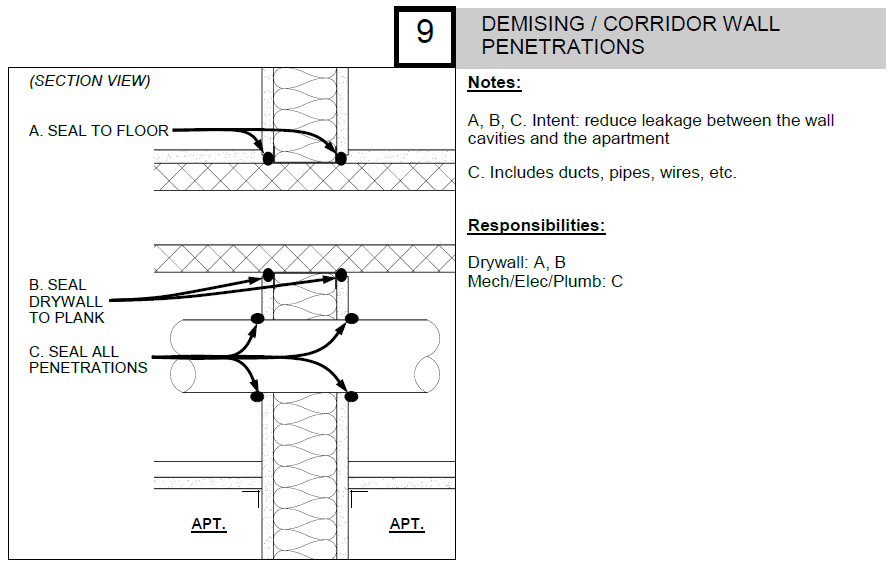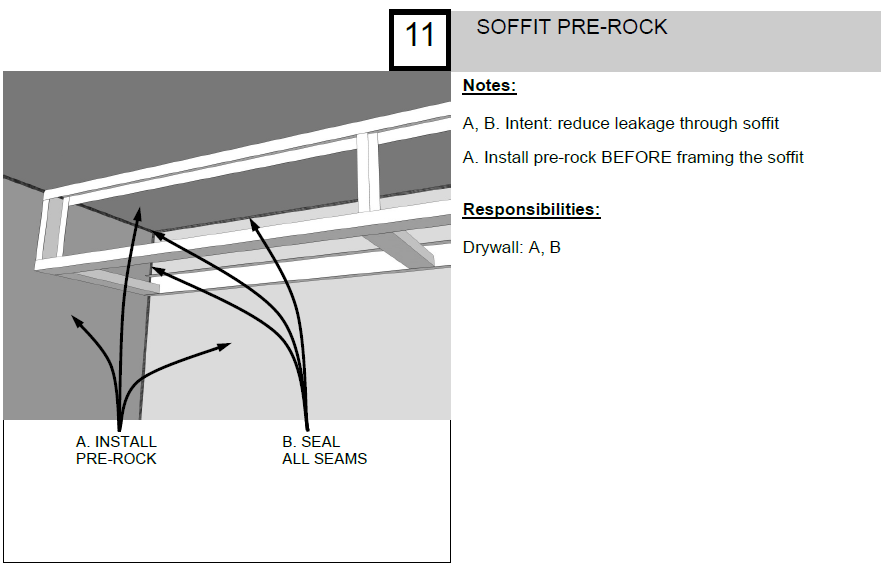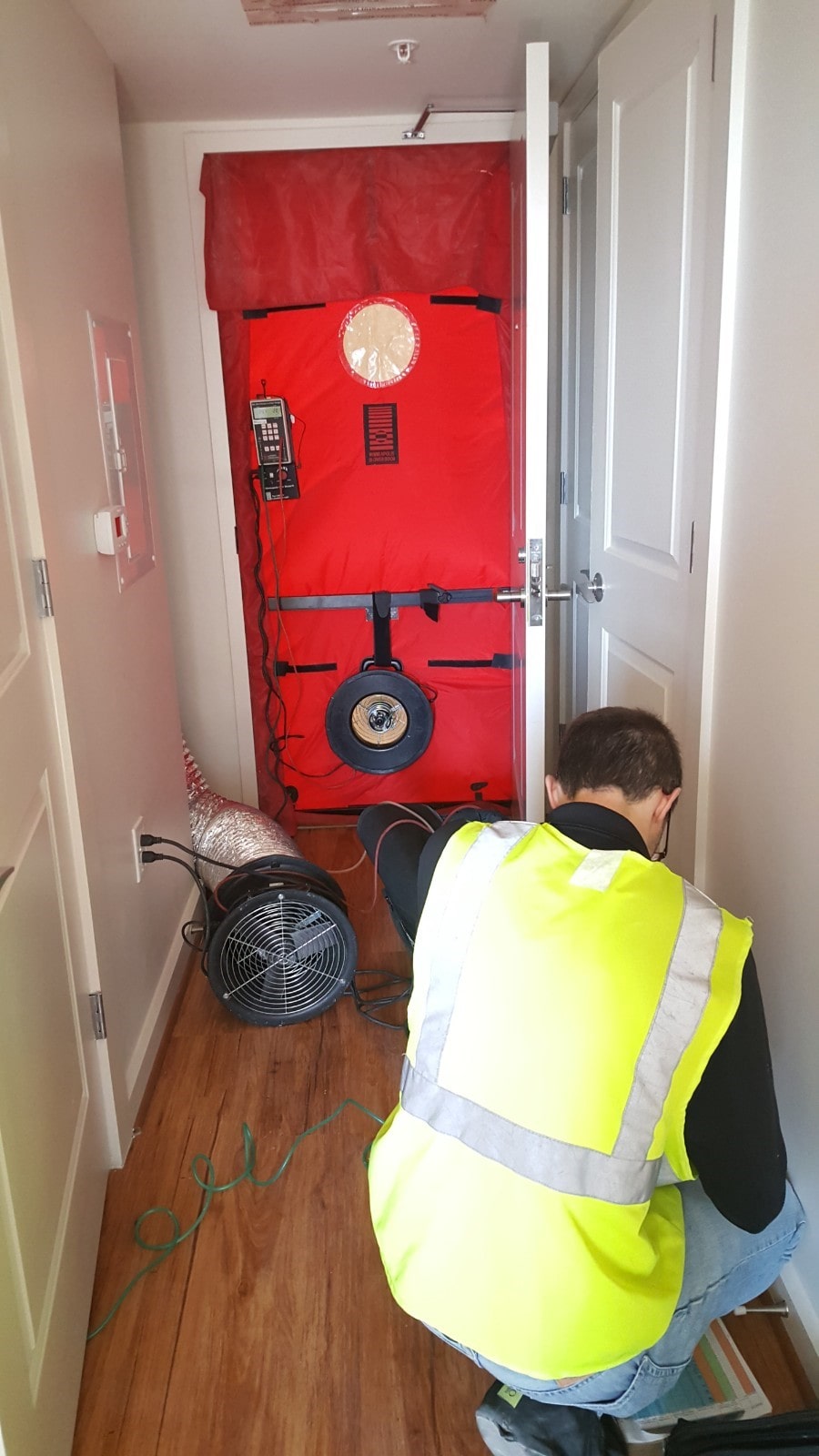- June 15, 2018
- 0 Comments
- In High-Performance Construction
- By Andrea Foss
If there was ever a silver bullet when it comes to best practices in multifamily buildings, air sealing would be it. Compartmentalization – or air sealing each unit to prevent infiltration between units and to the exterior – addresses many major issues we see in buildings.
Better HEALTH
- Air sealing is the best strategy to keep pests out and limit their movement within a building.
- Air carries a lot of moisture, so eliminating air leaks helps keep buildings dry and reduces the risks of mold and water damage.
- Compartmentalization prevents contaminated air from garages, basements, attics, and other undesirable sources from entering living spaces.
Improves COMFORT
- Air sealing reduces drafts and eliminates hot and cold spots.
- Limiting air transfer from one unit to the next reduces transmission of noise, smoke, and odor between units.
Wastes less ENERGY
- Air sealing lowers heating and cooling bills maintaining a more consistent indoor temperature.
- Compartmentalization improves the performance of ventilation and mechanical systems by limiting pathways for stack effect – the force of warm air from low to high – to occur in larger buildings.
How to Air Seal Multifamily Units
It’s important to remember to create a complete air barrier around the entire cube of a multifamily unit, not just to the exterior – any and all penetrations need to be sealed.
Air is relentless, and it will find any and every pathway into a unit. Sealing 50% of the apparent leaks will not cut 50% of the infiltration because air easily moves to the unsealed pathways. Good air sealing aims to block 90% of the leaks. This requires patience, attention to detail, and the expertise to recognize tricky air bypasses. It also requires a clear understanding of the thermal, moisture, fire, and air barriers, especially at complicated architectural details. Because there are multiple functions required of our enclosures, it is easy to see how designers and installers make mistakes with dwelling unit and whole building enclosures.
SWA’s Multifamily Air Sealing Guides for masonry, wood and steel framed buildings include details and tips for successful compartmentalization and common areas of concern.
Multifamily Blower Door Test Requirements
Compartmentalization is important for all the reasons outlined above, but it’s also becoming a requirement for many projects in order to meet code or achieve green building certification. The 2015 International Energy Conservation Code (IECC) calls for residential buildings to be tested with a blower door and verified as having an air leakage rate not exceeding 3-5 air changes per hour at 50 Pascals, depending on climate.
Green building programs such as ENERGY STAR, LEED Homes and Multifamily Midrise, Passive House, and Enterprise Green Communities all require blower door testing of some kind.
Tips for Successful Air Sealing:
- Good air sealing requires a plan, and should be a priority during the design phase. Ask yourself where is the air barrier? Can you trace it on plans and sections without lifting your pen? If so, congratulations! You have a continuous air barrier.
- During construction, air sealing should be the responsibility of all the trades. Air is persistent, and the whole project team needs to be vigilant in fighting it.
- A good rule for a job site is if you cut a hole, you seal it. It is easier for each trade to seal their own holes, rather than relying on one person to find everyone else’s holes. Ensure all trades have easy access to the same air sealing materials and proper training.
- Fire-stopping is not necessarily air sealing. Fire-stopping material like rock wool does virtually nothing to stop air infiltration. Use fire-rated caulk or foam to air seal.
By Andrea Foss, Sustainability Director




